Do you have a question about the IBM S85 pSeries 680 and is the answer not in the manual?
| Category | Server |
|---|---|
| RAM | Up to 256 GB |
| Operating System | AIX |
| Form Factor | Rack-mounted |
| Model | IBM S85 pSeries 680 |
Guidelines for installing units in a rack, specifying ambient temperature and airflow requirements.
Information regarding the use of ISO 9000 registered quality systems in product development and manufacturing.
Information on accessing RS/6000 and p Series publications online via IBM's web site.
List of related IBM publications providing additional system information, including safety, user guides, and diagnostics.
Provides a logical and physical overview of the S80 and S85 systems, including rack types, processor/memory packaging, and I/O drawers.
Illustrates the system data flow, detailing processor cards, memory cards, and I/O planar connections.
Describes the procedure for powering the system on and off, including operator panel button usage and AIX shutdown command.
Explains the firmware's console selection sequence at system boot time and how to select available console devices.
Details the system's power-on self-test (POST) that checks hardware functionality before operating system load.
Lists and describes the POST indicator words displayed on the system console during system preparation.
Describes the POST keys used to invoke system services or boot modes for configuration and diagnostics.
Explains the function of the numerical 1 key, which invokes the System Management Services (SMS) interface during POST.
Describes the function of the numerical 5 key for invoking service mode boot and stand-alone diagnostics.
Explains the function of the numerical 6 key, which works like the numerical 5 key but uses a custom bootlist for online diagnostics.
Details how to access the open firmware command line by pressing the numerical 8 key during startup.
Illustrates the two racks (system rack and I/O rack) that comprise the minimum S80 and S85 system configuration.
Describes various configurations for setting up the S80/S85 systems, including I/O drawer placement and sharing.
Illustrates a basic system configuration with the primary I/O drawer installed in an I/O rack.
Illustrates a basic system configuration showing the primary and secondary I/O drawers installed in an I/O rack.
Illustrates how two systems can share a single I/O rack by installing primary I/O drawers in different positions.
Shows configurations where systems drawers are installed in the I/O rack alongside primary and secondary I/O drawers.
Illustrates configurations where one I/O drawer and two H50/H70 systems share an I/O rack.
Shows the locations of components for front and rear views of the system rack.
Detailed illustration of component locations inside the front of the system rack, including memory and regulators.
Detailed illustration of component locations inside the rear of the system rack, including memory, regulators, and SPCN card.
Illustration showing the front of an I/O rack and the placement of 10 EIA-Unit I/O Drawers.
Illustration showing the rear of an I/O rack and the placement of 10 EIA-Unit I/O Drawers, including power distribution bus.
Shows component locations for the 10 EIA-unit I/O drawer, including front and rear views and SCSI IDs.
Diagram illustrating the front view of a 10 EIA-unit I/O drawer, labeling components like indicator panel and media bays.
Diagram illustrating the rear view of a 10 EIA-unit I/O drawer, labeling PCI adapter slots, connectors, and power supplies.
Diagram showing the locations of I/O boards and connectors within the 10 EIA-unit I/O drawer.
Diagram showing the locations of service processor cards and associated connectors within the system.
Diagram showing the locations of Fan Monitor Control (FMC) cards within the 10 EIA-unit I/O drawer.
Diagram showing the locations of power distribution boards and their connectors within the I/O drawer.
Provides information on system memory, including available slots and memory card sizes for models S80 and S85.
Details the locations of memory cards installed in the system backplane and the rules for ordering and upgrading memory.
Illustrates the locations of the operator panel display and pushbuttons on the system rack.
Describes the indicator panel located on the I/O drawer and the status of LEDs for power supplies.
Details the indicator panel and power supply LED status for the 10 EIA-unit I/O drawer.
Provides steps for connecting the system rack to I/O drawers, including JTAG, operator panel, RIO, and SPCN cables.
Illustrates how to connect JTAG and operator panel (OP) cables between the system rack and the primary I/O drawer.
Explains the functions of RIO and SPCN cables for remote data bus connection and power control, including cabling rules.
Details RIO cable connections rules, including how I/O drawers are connected using RIO loops.
Provides cabling examples for connecting the system rack to a single I/O drawer.
Illustrates two possible cabling configurations for a system rack attached to two I/O drawers.
Shows cabling configurations for a system rack attached to three I/O drawers.
Illustrates cabling configurations for a system rack attached to four I/O drawers.
Provides cabling examples for all valid SPCN configurations, matching configurations to illustrations.
Describes power distribution for S80/S85 racks, including connections and independent power systems.
Details power entry, filtering, bulk supplies, regulators, and blower requirements for the system rack.
Explains the power distribution network for the I/O rack, including PDB, outlets, and power supplies for I/O drawers.
Shows the internal cabling illustrations for the models S80 and S85 systems.
Illustrates the routing for power cables within the 10 EIA-unit I/O drawer.
Shows how to route power and signal cables on the top of the I/O adapter support to prevent overheating.
Illustrates SCSI IDs for media and disk drives, including factory jumper settings and hot-swap drive bay configurations.
Diagrams showing SCSI IDs for media devices, indicating factory jumper settings and bank locations.
Explains the use of physical and AIX location codes for mapping failing field replaceable units.
Describes how physical location codes map logical functions to specific locations within the platform structure.
Defines the alphanumeric string format of location codes, including separators and hierarchical relationships.
Details the basic formats of AIX location codes for non-SCSI and SCSI devices/drives.
Explains the location code format for planars, cards, and non-SCSI devices.
Defines the location code format for SCSI devices, including control unit and logical unit addresses.
Contains specifications for models S80 and S85 system rack, I/O rack, and I/O drawers.
Details mechanical packaging, cooling, power supply, and environmental requirements for the system rack.
Provides dimensions and electrical specifications for the I/O rack.
Lists specifications for the 10 EIA-Unit I/O drawer, including dimensions, electrical, temperature, humidity, and noise.
Indicates the space needed for service units, allowing proper air flow and access.
Defines noise emission positions and provides notes on noise emissions data for S80 and S85 systems.
Describes power cables used in the US, Canada, and other countries, including safety precautions for grounded outlets.
Provides a procedure for performing a service inspection on the system, including checks for safety conditions and component integrity.
Explains MAPs as entry points for system isolation and error recovery, listing key MAP types like Entry MAP and Power MAP.
Guides users to the starting point for problem determination, directing to appropriate MAPs or service references.
A subset of the Entry MAP designed to save time for specific problems, with a table of contents for different symptoms.
Provides actions for system stops with an 8-digit error code, often directing to error code lookup or checkpoint sections.
Details actions for system stops with a 4-digit error code, differentiating between those starting with 'E' and others.
Troubleshooting steps for display issues, covering graphics and ASCII terminals, and potential FRU replacements.
Guides through troubleshooting power-related issues, including system and I/O rack power-on problems.
Provides instructions for addressing a flashing 0888 or 888 on the operator panel display, often directing to Fast Path MAP.
Addresses various system symptoms not covered elsewhere, including POST indicators, startup messages, and password issues.
Procedure to get an error code or load diagnostics when customer-provided codes are missing or diagnostics cannot load.
Explains the purpose of MAP 1020, which is to obtain error codes and analyze problems, including examining the service processor error log.
Analyzes failure to load diagnostic programs, guiding through operator panel display checks and system actions.
Troubleshooting steps for keyboard-related problems, including identifying keyboard types and potential causes.
Action steps for error codes, including looking up codes in the FRU index and consulting supplemental manuals.
Procedure for checking the error log within System Management Services menus and taking action based on findings.
Procedure to locate power problems in the system rack or I/O rack, helping to isolate the failing unit.
Procedure to correct power-on problems in the system rack when no error code is displayed.
Procedure to diagnose and correct power-on issues in the I/O rack when no error code is present.
Troubleshooting steps for when I/O racks power on, but a rack-mounted unit does not, and no error code is shown.
Analyzes failures in normal command and operator panel procedures for powering off the system or an I/O rack.
Troubleshooting procedure for power system failures in the system rack, specifically when SRC is 1xxx1200.
Troubleshooting procedure for power regulator card failures in the system rack, specifically when SRC is 1xxx120y or 1xxx140y.
Procedure for isolating regulator problems by removing and testing regulator assemblies and SPCN cards.
Procedure to isolate power good problems by testing regulators and checking for specific SRCs.
Procedure to isolate AC box problems by checking blower status and performing bulk power supply exchanges.
Explains IPL checkpoints and error codes displayed during system initial program load (IPL).
Guides on finding error codes and recommended actions, referring to FRU index, parts, and MAPs.
Explains how Service Processor and Electronic Service Agent features protect against downtime and offer automated maintenance.
Describes the service processor's role in monitoring system attributes and taking corrective actions like surveillance and call home.
Details the service processor's monitoring of system firmware and operating system heartbeats for detecting failures.
Explains the call home function, allowing the service processor to alert service centers or administrators about system errors.
Describes how the service processor monitors the OS for hang conditions or failures, and initiates actions like restarts.
Details the electronic service agent as software extending AIX, monitoring failures, and automatically placing service calls.
Explains the IPL process in four phases: Service Processor Initialization, Hardware Initialization, System Firmware Initialization, and AIX Boot.
Represents time from power-on to E0xx checkpoints on the operator panel.
Represents time between first 8-digit checkpoint and operator panel clearing.
Represents time from phase 2 end to first 0000 checkpoint, showing Eyxx checkpoints.
Represents time from phase 3 end until operator panel clears, followed by AIX login prompt.
Lists checkpoints displayed during system processor IPL, with actions for possible failing FRUs.
Table detailing service processor checkpoints, their descriptions, and potential failing FRUs.
Lists progress codes (checkpoints) in the E1xx to EFFF range that occur during system startup.
Table listing firmware checkpoints, their descriptions, and possible failing FRUs.
Lists fault symptoms and possible causes to help decide which FRUs to replace when servicing the system.
Provides notes on error code formats, checkpoint codes, licensed programs, network adapter replacement, and error log access.
Lists firmware error codes, including I/O drawer power supply failures and other device-specific issues.
Table detailing firmware error codes, their descriptions, and actions/possible failing FRUs.
Lists error codes related to service processor functions, including surveillance and call home failures.
Table detailing service processor error codes, their descriptions, and actions/possible failing FRUs.
Procedure for using system reference codes (SRCs) to identify possible failing items and find isolation procedures.
Table that maps first four characters of SRCs to their type and guides the user to the correct SRC table.
Guides the user to additional information on standalone and online diagnostics within the Diagnostic Information for Multiple Bus Systems manual.
Explains that system diagnostics can be booted from default or service mode boot lists, which can be modified via service aids.
Provides a procedure to load standalone diagnostics by booting from the default boot list.
Describes how to load online diagnostics by booting from a custom boot list using the number 6 key.
Lists the default boot sequence and explains how the service mode boot list is created and used.
Divides service processor menus into General User and Privileged User groups, explaining access and functions.
Details how to access service processor menus locally via ASCII terminal, including recognizing access time and password prompts.
Explains remote access to service processor menus via modem, including call-in procedures and password entry.
Describes backing up service processor settings using the Save or Restore Hardware Management Policies service aid.
Explains how to return to service processor menus after exiting, including a 10-second delay and potential system reboot.
Describes how the service processor attempts to leave menu mode after 10 minutes of inactivity to prevent loss of control.
Lists menu options available to general users, requiring knowledge of the general access password.
Lists menus available only to privileged users, requiring the privileged-access password.
Details the information displayed at the top of the Main Menu, including firmware version, copyright, and system name.
Outlines the service processor setup menu, including options for changing passwords, console mirroring, and talk mode.
Details power control options such as unattended start mode, reboot/restart policy, and boot mode selection.
Provides access to system configuration, error logs, resources, and processor configuration information.
Allows selection of display languages for service processor and system firmware menus and messages.
Used to configure a modem for service processor call-in and call-out functions, including modem settings and phone numbers.
Shows status lines and selections for modem configuration, including serial ports and configuration file names.
Allows enabling or disabling call-in and call-out functions for each serial port.
Enables setting serial port speed for terminal performance or modem capabilities.
Used to set or change telephone numbers for reporting system failures, including service center and pager numbers.
Allows setting call-out policy to first or all, and configuring remote timeout, latency, and retries.
Allows users to enter account-specific information like account number and RETAIN login details.
Controls Reboot/Restart Policy, including number of attempts, OS-defined policy, and supplemental restart policy.
Allows selection of boot options: SMS Menu, Service Mode Boot from Saved/Default List, or Boot to Open Firmware.
Lists service processor options that are suspended when the system is in service mode.
Discusses service processor functions in detail, including built-in, local user, and remote user functions.
Describes system power-on methods: Power-on Switch, Remote Power-on via Ring-Indicate, Unattended start mode, Timed power-on, and Failed Boot Attempt.
Explains how service processor disables call-in due to bad battery power, and how to reset passwords after battery restoration.
Defines Reboot and Restart processes for system hardware and operating system reinitialization.
Describes how slow IPL is automatically invoked during reboot recovery to allow POST to report problems.
Explains how the service processor monitors boot progress and can reinitiate the boot process if it stops.
Describes how the service processor monitors operating system activity for hang conditions or failures.
Explains how to start text-based System Management Services and use its utilities for system information and configuration.
Allows access to set or remove privileged-access passwords and manage unattended start mode.
Allows viewing or clearing the system error log, showing error codes and locations.
Enables and sets up remote startup capability by specifying network parameters like IP addresses.
Allows selection and entry of IP addresses, server IP, gateway IP, and subnet mask for network configuration.
View adapter hardware addresses and configure network adapters, including Ethernet settings like data rate and duplex.
Tests connection to a remote system unit by pinging it, requiring adapter selection and address input.
Allows setting SCSI hard disk spin-up delay times and SCSI IDs for installed SCSI controllers.
Defines the display used by the system for system management; defaults to Serial Port 1 if none selected.
Allows selection of booting methods, including software selection, default, install device, boot devices, OK prompt, and startup.
Displays available operating system names for installation, potentially indicating lost nonvolatile storage if 'No Operating System Installed' appears.
Allows selection of the default operating system for system startup, which may not be supported by all operating systems.
Produces a list of devices (e.g., CD-ROM) from which the operating system may be installed.
Allows viewing and changing the custom boot list, which determines the sequence of devices read at startup time.
Lists the current order of devices in the boot list, showing device number, current position, and name.
Restores the boot list to the default sequence: diskette, CD-ROM, tape, hard disk, and network device.
Provides access to the open firmware command prompt for setting up adapters not configurable via System Management Services.
Toggles between Off and On to select whether the Multiboot menu invokes automatically on startup.
Changes the language used by text-based System Management Services screens and service processor menus.
Provides access to the open firmware command prompt for adapter setup; type 'reset-all' to exit.
Describes how to exit System Management Services by typing 'x' at the utilities menu.
Provides precautions for handling static-sensitive devices like disk drives and CD-ROMs to prevent damage.
Details procedures for powering off and powering on the system, including operator panel pushbuttons and AIX commands.
Describes methods to power off the system using AIX command or operator panel power pushbutton procedure.
Provides steps to power on the system rack and attached I/O drawers, noting the behavior of operator panel lights.
Lists components like disk drives, blowers, and power supplies that can be removed or replaced without powering off the system.
Outlines the starting point for all removal procedures in the system rack, including finding part locations and following procedures.
Describes the fast power up sequence, recommended for service environments, noting that key system functions are not verified.
Provides removal and replacement procedures for front, rear, top, and side covers, with notes on safety.
Details the steps for removing front, rear, and top covers, including references to specific diagrams.
Instructs to replace covers in the reverse order of removal.
Provides removal and replacement procedures for the AC box, including disconnecting power cords and removing screws.
Details procedures for removing and replacing front blowers, noting that the system does not need to be powered off.
Notes regarding hot-swappable front blowers, emphasizing not powering off the system and the force required for installation.
Steps for removing front cover, EMC shield, and blower assembly, including operator panel selections.
Instructs to replace the blower assembly in reverse order and notes that it powers on automatically upon installation.
Details procedures for removing and replacing rear blowers, including operator panel selections.
Steps for removing rear cover, EMC shield, blower assembly, and disconnecting cables for rear blowers.
Instructs to replace the blower assembly in reverse order.
Applies to removing or replacing processor cards, memory cards, regulator cards, and I/O hub cards.
Provides steps for removing electronic cards, emphasizing electrostatic discharge precautions and powering off the system.
Details procedures for removing and replacing the operator panel, including ESD precautions and disconnecting cables.
Steps for removing the operator panel, including powering off, disconnecting power and cables, and removing the panel.
Instructions for replacing the operator panel, including VPD reprogramming and resetting customer passwords.
Provides removal and replacement procedures for the operator panel battery, including safety precautions and disposal instructions.
Steps for removing the operator panel battery, emphasizing CAUTIONs regarding handling lithium batteries.
Instructions for replacing the operator panel battery, including system restart and password reset guidance.
Details procedures for removing and replacing the operator panel cable, noting potential loss of settings upon disconnection.
Steps for removing the operator panel cable, including powering off, disconnecting power and cables, and noting potential setting loss.
Instructions for replacing the operator panel cable, including system restart and password reset guidance.
Provides procedures for removing and replacing hot-swappable bulk power supplies, noting not to power off the system.
Steps for removing front cover, EMC shield, and bulk power supplies, including using operator panel functions.
Instructs to replace the bulk power supply in reverse order, ensuring retained screws are engaged.
Details procedures for removing or installing programmable regulator cards in positions R01 - R10.
Steps for removing programmable regulators, emphasizing powering off the system and disconnecting AC power cords.
Instructs to replace the regulator in reverse order.
Provides procedures for removing and replacing the SPCN card, including marking cable locations.
Steps for removing the SPCN card, including powering off, disconnecting AC power, and removing rear cover.
Instructs to replace the SPCN card in reverse order and notes the requirement for a firmware update if different from original.
Details procedures for removing and replacing the system backplane assembly.
Steps for removing the system backplane, including disconnecting cables and noting part locations.
Provides procedures for removing and replacing the rear cage assembly.
Steps for removing EMC shields, brackets, cards, and screws to detach the rear cage assembly.
Instructs to replace the rear cage assembly in reverse order.
Provides procedures for removing and replacing the dual line cord feature.
Steps for removing front and rear system covers, noting part locations.
Provides procedures for removing and replacing components in the I/O rack, starting with the front door.
Details the removal and replacement of the front door from the I/O rack, including hinge pin removal.
Instructs to replace the front door in reverse order of removal.
Describes the procedure for installing a 10 EIA-unit I/O drawer, starting with rail installation.
Details the installation of anti-tilt rails and mounting hardware for the 10 EIA-unit I/O drawer.
Illustrates typical rail installation, showing the rack with front door and hinges removed.
Provides steps for installing the 10 EIA-unit I/O drawer into the rack, including weight reduction and proper lifting techniques.
Describes how to place the drawer into the service position for access to the front of the drawer.
Details steps for placing the drawer into the operating position, including sliding it into the rack.
Provides procedures specific to the 10 EIA-unit I/O drawer, covering removal and replacement of components like the I/O tray.
Details the removal and replacement of the I/O tray from the 10 EIA-unit I/O drawer.
Steps for removing AC power cords, cables, access panel, and screws for the I/O tray.
Instructs to replace the I/O tray in reverse order of removal.
Provides procedures for removing and replacing hot-swappable blower assemblies without powering off the system.
Steps for removing the front door, loosening screws, and pulling out the blower assembly.
Instructs to replace the blower assembly in reverse order, ensuring engaged screws for proper connection.
Describes a test to determine if a power supply needs replacement, involving a test switch and LED indicators.
Provides procedures for replacing hot-swappable power supplies and fan assemblies, with DANGER and Attention notes.
Notes regarding hot-swappable power supplies: two per drawer, individual replacement, and test switch availability.
Steps for removing power supplies and external fan assembly, emphasizing not opening covers and ambient temperature limits.
Details procedures for removing and replacing the Fan Monitor Control (FMC) card.
Steps for removing FMC card, including powering off, opening rack doors, and disconnecting cables.
Instructs to replace the FMC card by reversing removal steps and routing cables correctly.
Provides procedures for removing and replacing the power distribution board.
Steps for removing power supplies, I/O tray, covers, cables, and screws to access the power distribution board.
Details procedures for removing and replacing media devices, including CAUTIONs about lasers and disassembly.
CAUTIONs regarding media drives: do not open, no user adjustments, and Class 3 laser warning.
Notes for media devices: procedure is same for supported drives; refer to installation/user guide for operations.
Steps for removing media devices, including opening the front door and loosening screws.
Provides procedures for removing hot-swap disk drives while the I/O drawer is powered on.
Describes procedures for removing or installing a drive while system power is on, using SMIT command.
Steps to unconfigure (remove) a disk drive by logging in as root and using SMIT.
Steps to configure (replace) a disk drive by logging in as root and using SMIT.
Describes removing hot-swap disk drives while the I/O drawer is powered on, with attention to handling and delay.
Provides procedures for removing and replacing the SCSI backplane.
Steps for removing the SCSI backplane, including placing drawer in service position and disconnecting cables.
Instructions for replacing the SCSI backplane, including checking jumpers for proper setting.
Details procedures for removing and replacing the drawer indicator panel assembly.
Steps for removing blowers, media devices, cables, and spring clips to remove the drawer indicator panel assembly.
Provides procedures for removing and replacing the service processor card.
Steps for removing the service processor card, including recording settings and disconnecting cables.
Instructions for replacing the service processor card, including VPD reprogramming and password reset.
Details procedures for removing and replacing adapters in the I/O drawer.
Steps for removing adapters, including powering off, disconnecting cables, and removing screws.
Instructs to replace adapters in reverse order of removal.
Provides procedures for removing and replacing the I/O planar.
Steps for removing I/O tray, adapters, service processor card, and cables to access the I/O planar.
Provides procedures for removing and replacing the bulkhead card.
Steps for removing the bulkhead card, including powering off, disconnecting AC power, and removing screws.
Instructs to replace the bulkhead card in reverse order.
Identifies parts by name and provides part numbers for quick cross-reference to diagnostic procedures.
Contains parts information for the system rack, including front, rear, and top covers.
Details the parts for the front, rear, and top covers of the system rack.
Lists parts information for electronic cards installed in the system rack.
Diagram and parts list for the first view of the power subframe assembly.
Diagram and parts list for the second view of the power subframe assembly.
Diagram and parts list for the third view of the power subframe assembly.
Contains parts information for the I/O drawer.
Lists parts information for the 10 EIA-Unit I/O drawer, including covers, cards, and cables.
Contains parts information for the S80 I/O rack, including covers, casters, and mounting hardware.
Details the parts for the I/O rack covers, including front and rear doors, hinges, and screws.
Lists labels used on the I/O rack, such as safety labels, nameplates, and rack identifiers.
Illustrates rails and front bezels for rack drawers, with details on rail components and mounting hardware.
Shows the components and connections of the power distribution bus.
Illustrates leveling feet and bolt down hardware for rack mounting.
Illustrates mounting plates for accessory electrical outlets.
Lists various accessories, including power cables and keyboards/mice.
Lists part numbers and descriptions for power cables used with system racks and I/O racks.
Lists part numbers for various keyboards and mice, including language and region specific models.
Lists part numbers for black keyboards and mice, including language and region specific models.
Provides information on handling and disposing of materials like circuit boards and batteries according to regulations.
Highlights IBM's commitment to environmental efforts, including ozone-depleting chemical elimination and waste reduction.
States that the unit-related emission value is equal to or lower than 70dB(A).
Illustrates the locations of the operator panel display and pushbuttons on the system rack.
Lists operator panel functions and descriptions, detailing Function Codes and their selected functions.
Notes regarding function codes, including character usage, customer verification, and system analysis starting points.
Provides detailed descriptions of operator panel functions, including IPL types, modes, and speeds.
Presents tables of valid IPL types and speeds used in operator panel functions 01 and 02.
Table listing valid IPL types (A, B, C, D) and their descriptions.
Table listing IPL speeds (F, S, V) and their details for diagnostics and hardware changes.
Allows display of IPL type (A or B) and IPL speed (F, S, V) by pressing Enter.
Details Function 01's functionality for displaying selected IPL type, mode, and speed.
Allows selection of IPL type (A or B) and overriding system IPL speed (F, S, V) when system power is off.
Details Function 02's functionality for selecting IPL Type (A or B) and saving the selection.
Starts an IPL using the selected IPL mode, which may cause the system to power off and on.
Ensures indicators and characters displayed on the operator panel are valid by activating lights and patterns.
Displays power fault information and reference codes during concurrent maintenance, with specific format for function.
Allows concurrent maintenance on bulk power supplies and blowers when the system is powered on.
Details Function 07 options for restoring system power and performing concurrent maintenance repair on specific devices.
Allows fast power off when the system is suspended and power down cannot be performed.
These functions are reserved for future operator panel operations.
Represents words of the SRC, providing primary SRC, status information, and CCIN for FRU replacement.
Provides greater debug capability for models S80/S85, including AIX storage dump and restricted panel functions.
Supports AIX run time for initiating an AIX dump to media, requiring prior setup and enabling from AIX.
Enables or disables Functions 50 through 70 using switches 1 (Function 25) and 2 (Function 26).
Functions that are enabled when Functions 25 and 26 are entered, describing all panel functions.
Explains how to use subfunctions with Functions 51 and 55 through 64, displaying data and allowing repeated steps.
Stops the system processor, with a caution that it may cause abnormal system ending.
Displays system processor status values like NIA and current TDE address.
Starts the system processor after it has stopped.
Resets communications between the service processor and the operator panel.
Describes low-level debug functions enabled when the system is stopped and Functions 25/26 are selected.
Displays service processor log buffer data related to system termination.
Contains system processor and service processor state data at time of failure, including failing LID.
Shows IPL parameters area status, including type of IPL being performed.
Sets the first character of the base address for function 62 display.
Sets the second character of the base address for function 62 display.
Sets the last character of the base address for function 62 display.
Provides a sample Service Processor setup procedure checklist, including ensuring server power off and attaching terminals.
Procedure to verify service processor setup by testing communication with the server's operating system and serial ports.
Tests the call-in capability by calling the server's telephone number and verifying the service processor menus display.
Tests the call-out feature by simulating an error condition and verifying the system unit pages the user.
Configures serial ports on an AIX system, including determining existing ports and setting baud rate and flow control.
Attention regarding Service Processor (SP) programming of System VPD, emphasizing correct field entry.
Explains how to determine system and service processor firmware levels using AIX commands or Service Management Utilities.
Procedure to determine firmware level by typing 'lscfg -vp | grep -p alterable' at AIX command prompt.
Provides information on where to obtain firmware update packages from the IBM web site.
Guides on downloading firmware, including accepting license terms, assigning passwords, and printing description files.
Lists sample modem configuration files located in service processor firmware and /usr/share/modems subdirectory.
Provides a list of generic modem configuration files for AIX and SP Firmware.
Provides a list of specific modem configuration files for AIX and SP Firmware.
Guides on selecting a modem configuration file based on modem model (IBM 7852-400 or IBM 7857-017).
Specifies the correct DIP switch settings for the IBM 7852-400 modem to enable service processor communications.
Explains how to create or modify modem configuration files using the Configure Remote Maintenance Policy Service Aid.
Discusses compatibility of service processor with ASCII terminals and emulators, emphasizing matching key assignments.
Suggests strategies for recovering modem state due to noises, surges, or undefined states, including shutdown and reconnect.
Describes strategies for dealing with modem response to DTR transitions: Recovery and Prevention.
Explains a strategy for establishing remote sessions by making three calls, including system initialization and login.
Describes preventing connection loss caused by operating system initialization of the primary console.
Provides sample modem configuration files.
Sample modem configuration file for Hayes compatible modems using ATZ reset command.
Sample modem configuration file for Hayes compatible modems using AT&F0 reset command for factory defaults.
Sample modem configuration file for Hayes compatible modems using AT&F1 reset command for factory defaults.
Provides cabling information for HA-S80/S85 Advanced Cluster Servers, considering four areas for redundancy.
Discusses configuring HA systems with redundant adapters and mirrored disks for no single points of failure.
Details cabling for base HA systems, including consoles, workstations, heartbeat, SSA, and power connections.
Shows cabling requirements for connecting ASCII or graphical terminals and LAN-attached workstations.
Illustrates connecting a single ASCII terminal to both cluster servers for administrator and service representative access.
Shows how each cluster server must have its own console when using a graphical system console.
Describes the requirement for a LAN-attached workstation for cluster administration, needing two LANs for redundancy.
Explains primary heartbeat connections between HA cluster servers using serial and LAN connections.
Shows how to connect cables from HA cluster servers to 7133 Serial Disk Systems.
Illustrates cabling for a fully populated 7133 system with 16 disk drives, noting potential use of different port numbers for fewer drives.
Shows how power can be connected redundantly to ensure separate power connections for cluster servers.


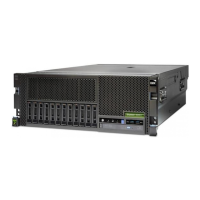
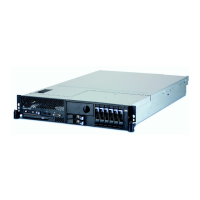
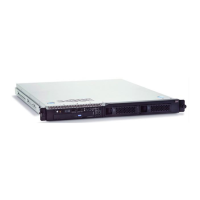

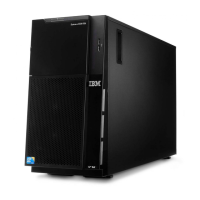
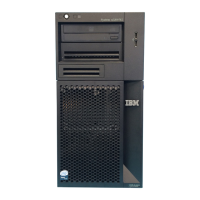
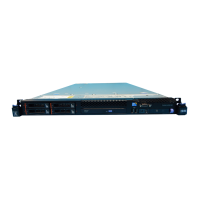
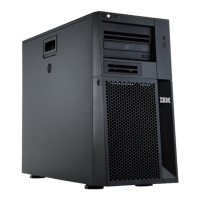
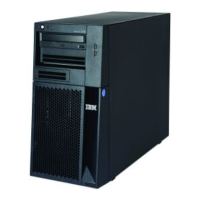

